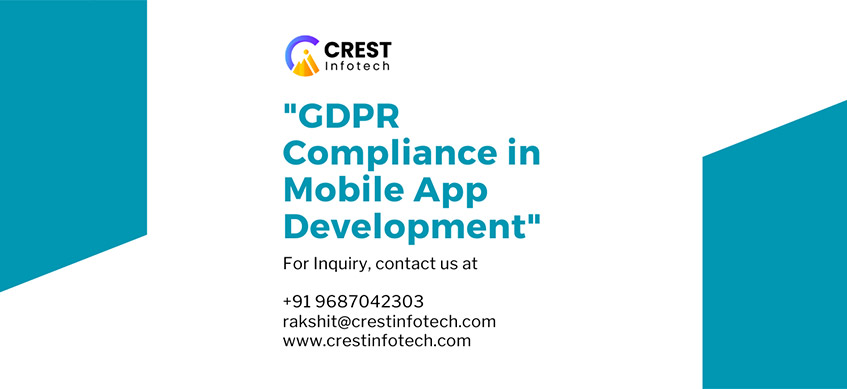The General Data Protection Regulation (GDPR), enforced by the European Union (EU), sets strict guidelines for data privacy and protection, impacting how businesses worldwide handle personal data. For mobile app developers, ensuring GDPR compliance is not just about regulatory adherence but also about building trust with users and mitigating risks associated with data breaches. This article explores essential considerations, best practices, and steps developers can take to ensure GDPR compliance in mobile app development.
Understanding GDPR and Its Scope
GDPR aims to protect the personal data of EU citizens and residents by regulating how businesses collect, store, process, and share such data. Key aspects include:
- Personal Data Definition: GDPR broadly defines personal data as any information that relates to an identified or identifiable individual, including names, email addresses, location data, and more.
- Principles of Data Protection: GDPR outlines principles such as lawfulness, fairness, transparency, purpose limitation, data minimization, accuracy, storage limitation, integrity, and confidentiality.
- Rights of Data Subjects: GDPR grants individuals rights such as the right to access, rectify, erase, restrict processing, data portability, and the right to object to processing of their personal data.
GDPR Compliance in Mobile App Development
- Data Collection and Consent Management:
- Informed Consent: Obtain explicit consent from users before collecting any personal data, clearly stating the purposes of data collection and processing.
- Granular Consent Options: Offer users granular choices to consent or opt-out of specific data processing activities (e.g., marketing communications, analytics).
- Data Minimization and Storage Limitation:
- Collect Only Necessary Data: Limit data collection to what is necessary for the intended purpose, avoiding excessive or irrelevant data.
- Data Retention Policy: Define and adhere to a data retention policy to delete or anonymize personal data when it is no longer needed for its original purpose.
- Data Security and Encryption:
- Encryption: Use strong encryption methods to protect personal data both in transit and at rest, ensuring unauthorized access prevention.
- Data Breach Response Plan: Have a robust data breach response plan in place, including notification procedures to inform affected users and authorities promptly.
- Third-Party Service Providers:
- Vendor Management: Ensure third-party service providers (e.g., cloud storage providers, analytics platforms) comply with GDPR requirements through contractual agreements (Data Processing Agreements, DPAs).
- User Rights and Transparency:
- User Access and Control: Enable users to easily access, update, or delete their personal data through app settings or user profiles.
- Transparency: Provide clear and concise privacy policies and terms of service that explain how personal data is handled, processed, and protected.
- GDPR Compliance by Design and Default:
- Privacy by Design: Incorporate data protection principles and privacy features into the app’s design and development process from the outset.
- Default Settings: Implement privacy-friendly default settings to minimize data collection and processing unless explicitly authorized by the user.
Steps to Ensure GDPR Compliance
- Conduct a Data Protection Impact Assessment (DPIA): Assess potential risks to user data and implement measures to mitigate those risks.
- Appoint a Data Protection Officer (DPO): If required by GDPR, designate a DPO responsible for overseeing data protection compliance within your organization.
- Regular Audits and Reviews: Conduct regular audits and reviews of data processing activities, security measures, and compliance with GDPR principles.
- Educate and Train Employees: Provide training to employees involved in data processing to ensure awareness of GDPR requirements and best practices.
Conclusion
GDPR compliance is crucial for mobile app developers to protect user privacy, build trust, and avoid legal repercussions. By integrating GDPR principles into the app development lifecycle—from data collection and consent management to data security, transparency, and user rights—developers can create apps that prioritize user privacy and comply with global data protection standards.
By following best practices, conducting thorough assessments, and staying updated on regulatory changes, developers can navigate GDPR compliance effectively and contribute to a safer, more trustworthy digital ecosystem for users worldwide.
This article provides a comprehensive overview of GDPR compliance in mobile app development, emphasizing key principles, best practices, and steps developers can take to ensure data protection and regulatory adherence. Adjust content based on specific app categories, target audiences, and legal requirements relevant to your development goals and compliance strategies.



